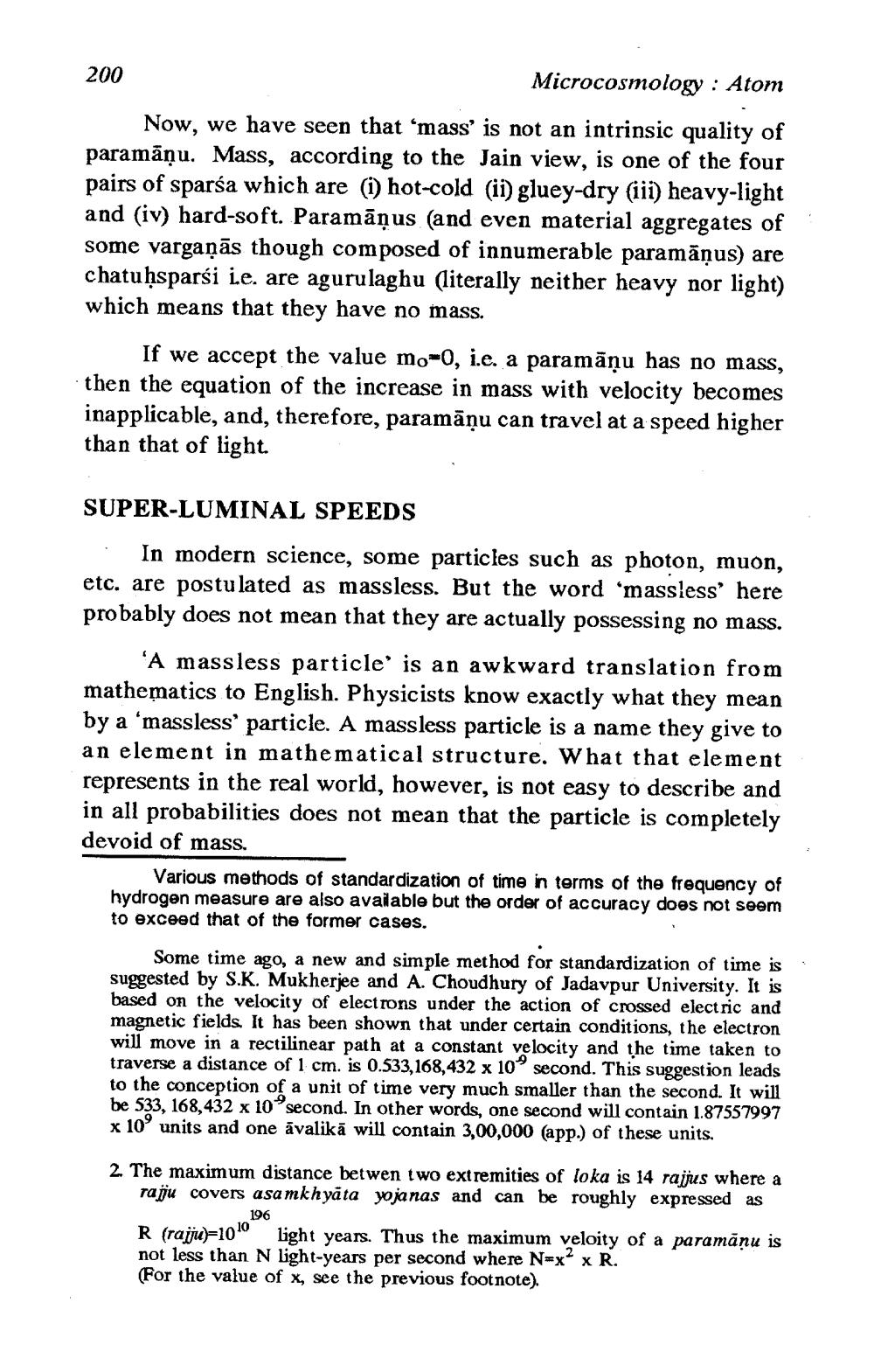________________
200
Microcosmology : Atom
Now, we have seen that ‘mass' is not an intrinsic quality of paramāņu. Mass, according to the Jain view, is one of the four pairs of sparśa which are (1) hot-cold (ii) gluey-dry (iii) heavy-light and (iv) hard-soft. Paramāņus (and even material aggregates of some vargaņās though composed of innumerable paramāņus) are chatuḥsparsi i.e. are aguru laghu (literally neither heavy nor light) which means that they have no mass.
If we accept the value mo-0, i.e. a paramāņu has no mass, then the equation of the increase in mass with velocity becomes inapplicable, and, therefore, paramāņu can travel at a speed higher than that of light.
SUPER-LUMINAL SPEEDS
In modern science, some particles such as photon, muon, etc. are postulated as massless. But the word ‘massless' here probably does not mean that they are actually possessing no mass.
'A massless particle' is an awkward translation from mathematics to English. Physicists know exactly what they mean by a ‘massless' particle. A massless particle is a name they give to an element in mathematical structure. What that element represents in the real world, however, is not easy to describe and in all probabilities does not mean that the particle is completely devoid of mass.
Various methods of standardization of time in terms of the frequency of hydrogen measure are also available but the order of accuracy does not seem to exceed that of the former cases.
Some time ago, a new and simple method for standardization of time is suggested by S.K. Mukherjee and A. Choudhury of Jadavpur University. It is based on the velocity of electrons under the action of crossed electric and magnetic fields. It has been shown that under certain conditions, the electron will move in a rectilinear path at a constant velocity and the time taken to traverse a distance of 1 cm. is 0.533,168,432 x 10 second. This suggestion leads to the conception of a unit of time very much smaller than the second. It will be 533, 168,432 x 10 second. In other words, one second will contain 1.87557997 x 10° units and one ávalikā will contain 3,00,000 (app.) of these units.
2 The maximum distance betwen two extremities of loka is 14 rajjus where a
raju covers asamkhyāta yojanas and can be roughly expressed as
196
R (rajju)=10 light years. Thus the maximum veloity of a paramāņu is not less than N light-years per second where N=x* x R. (For the value of x, see the previous footnote).




